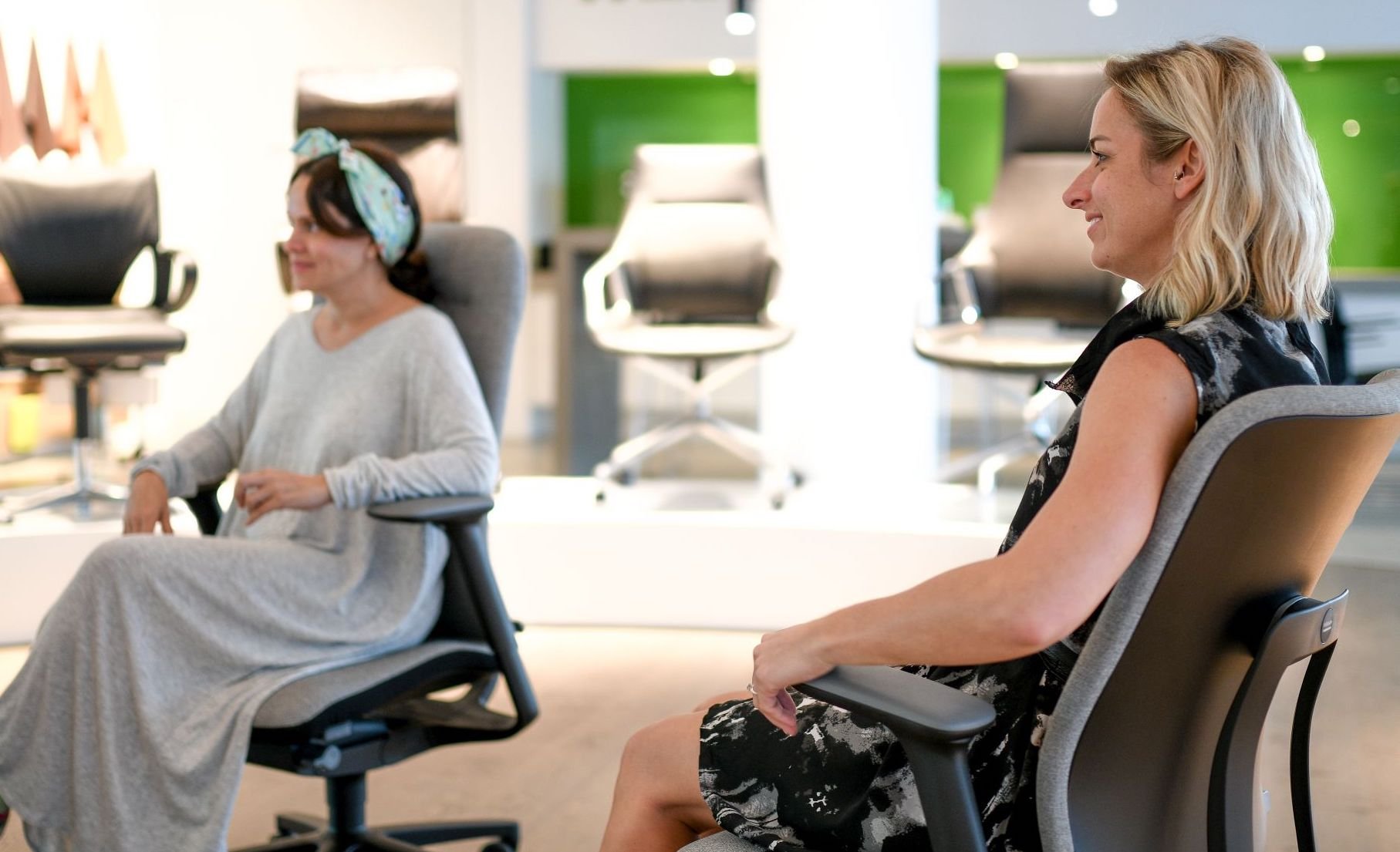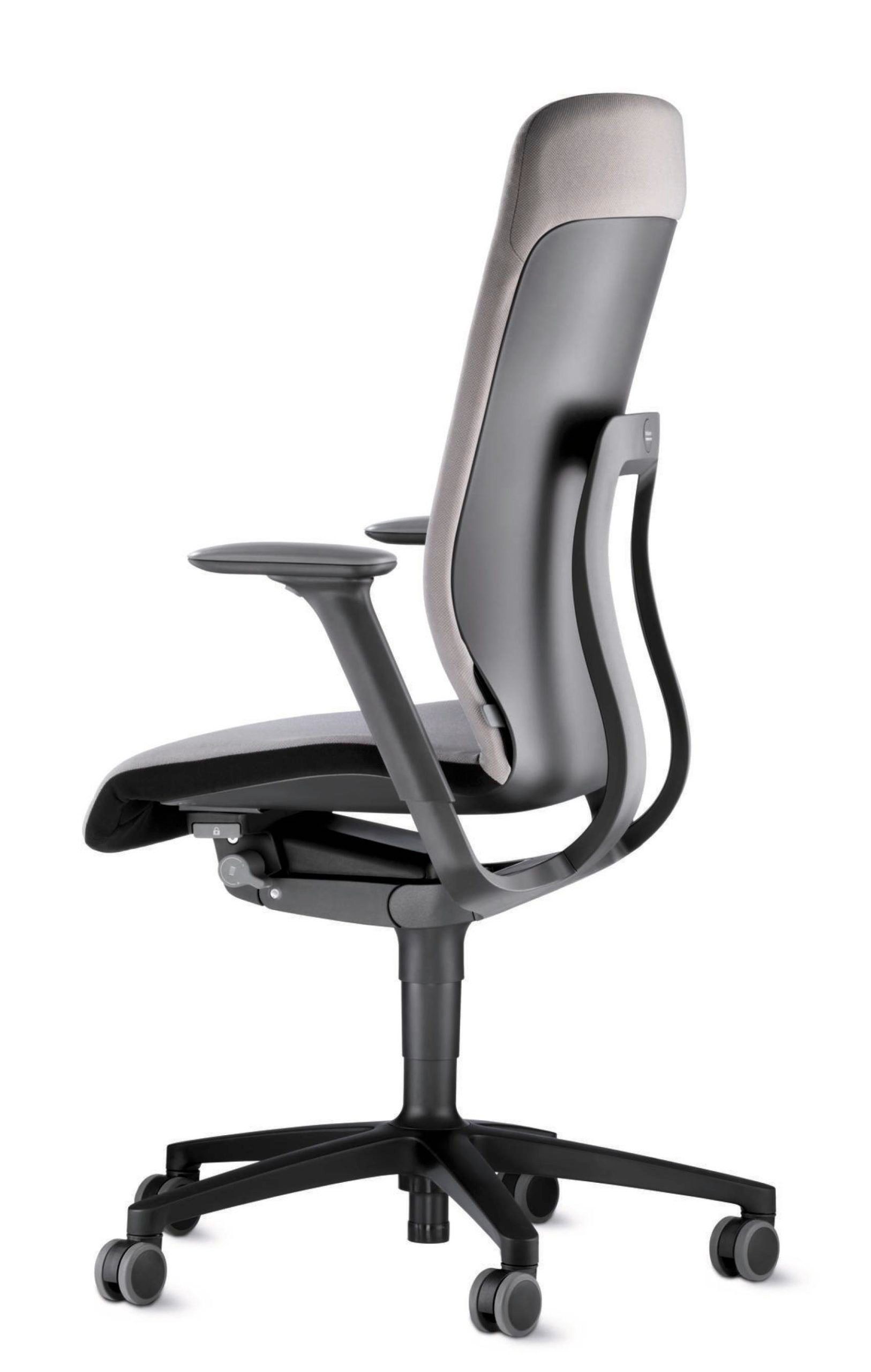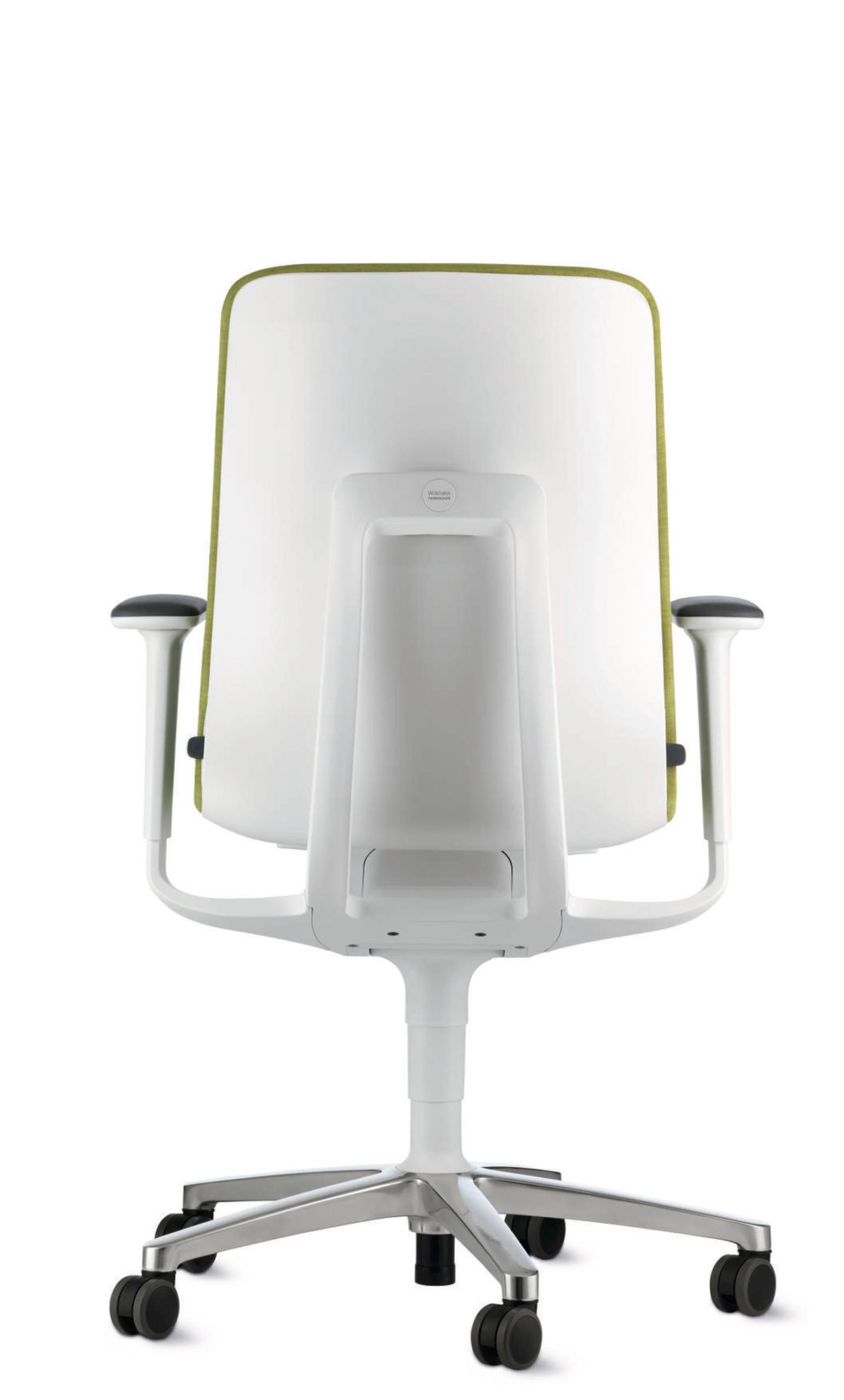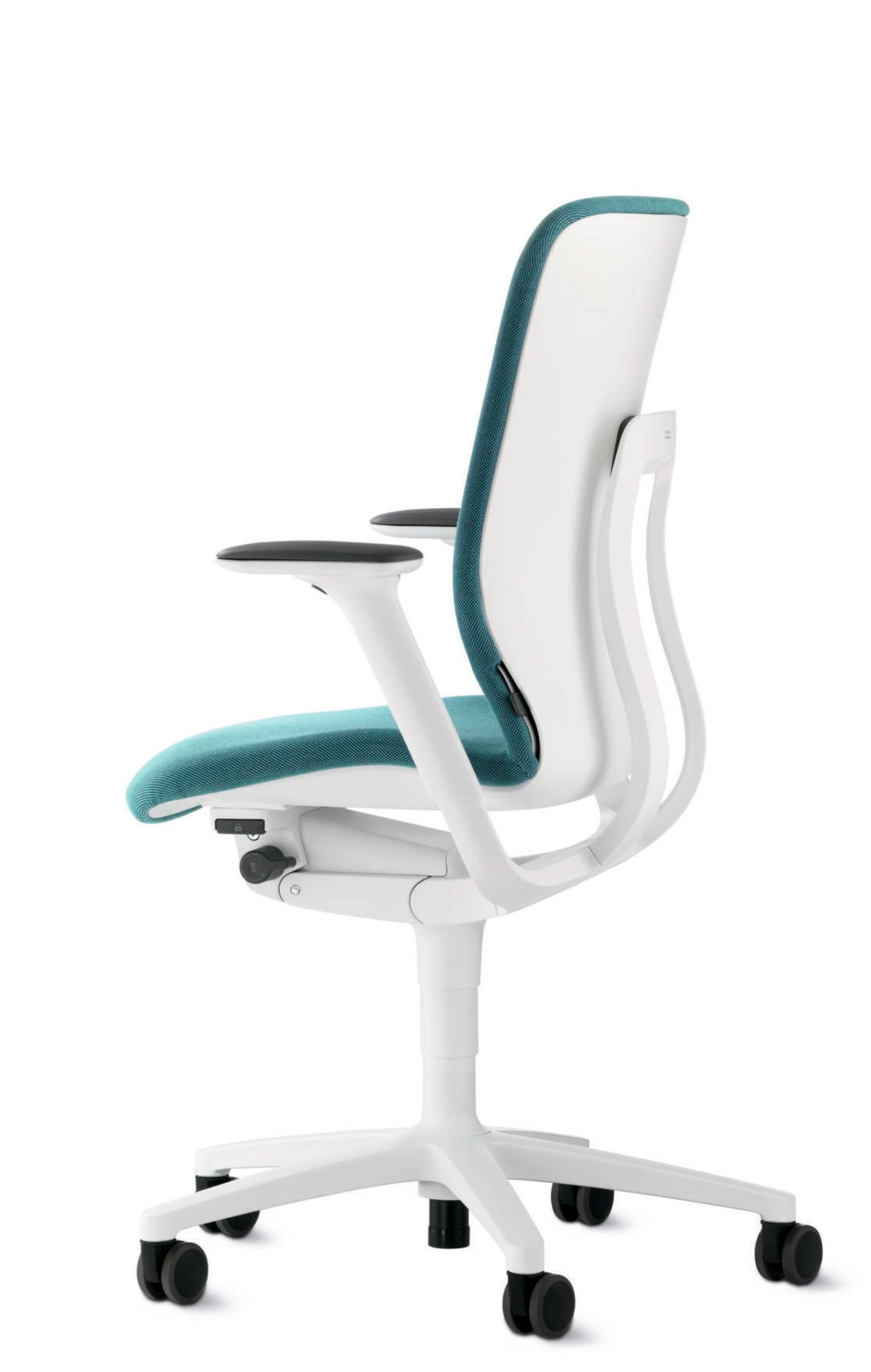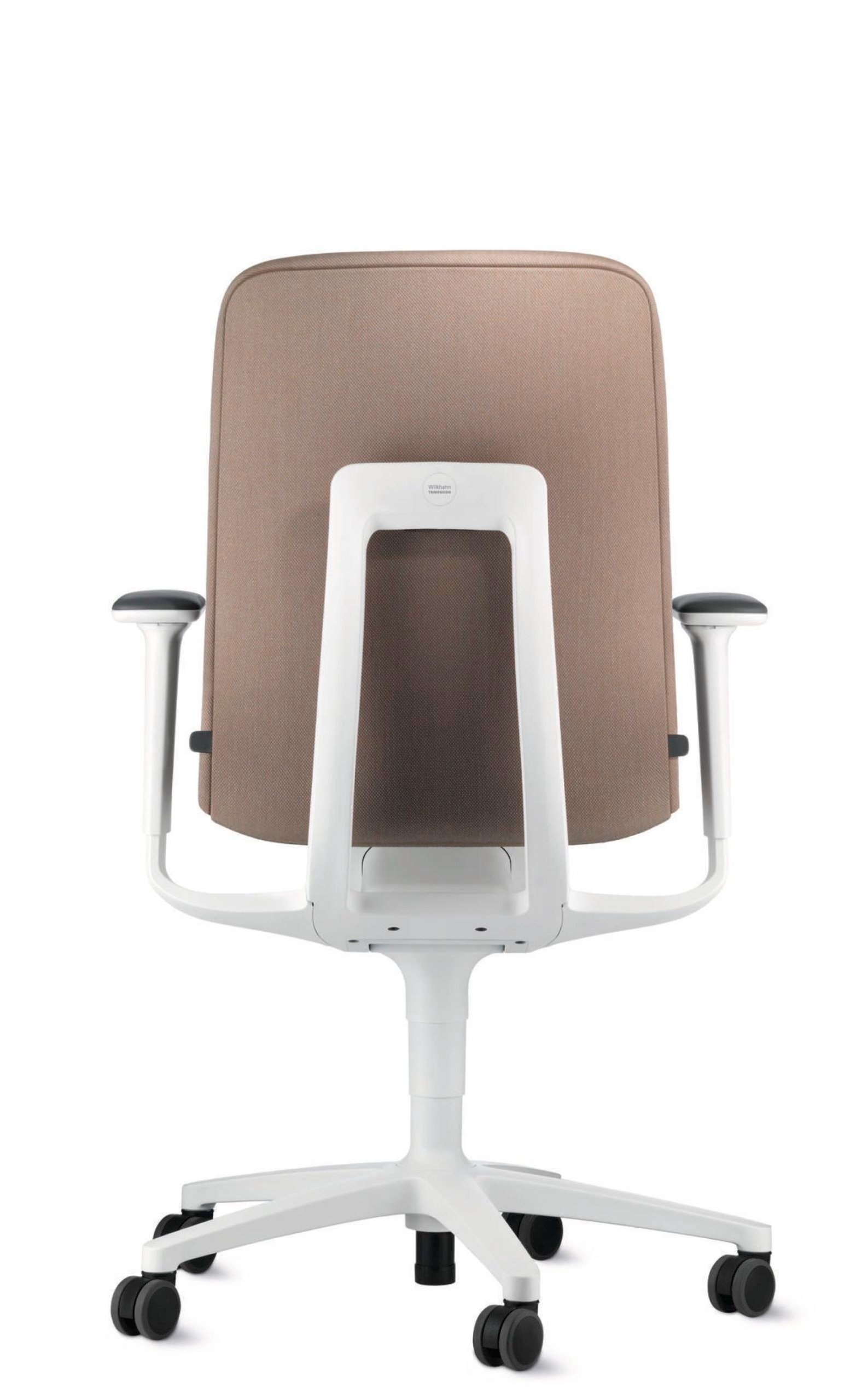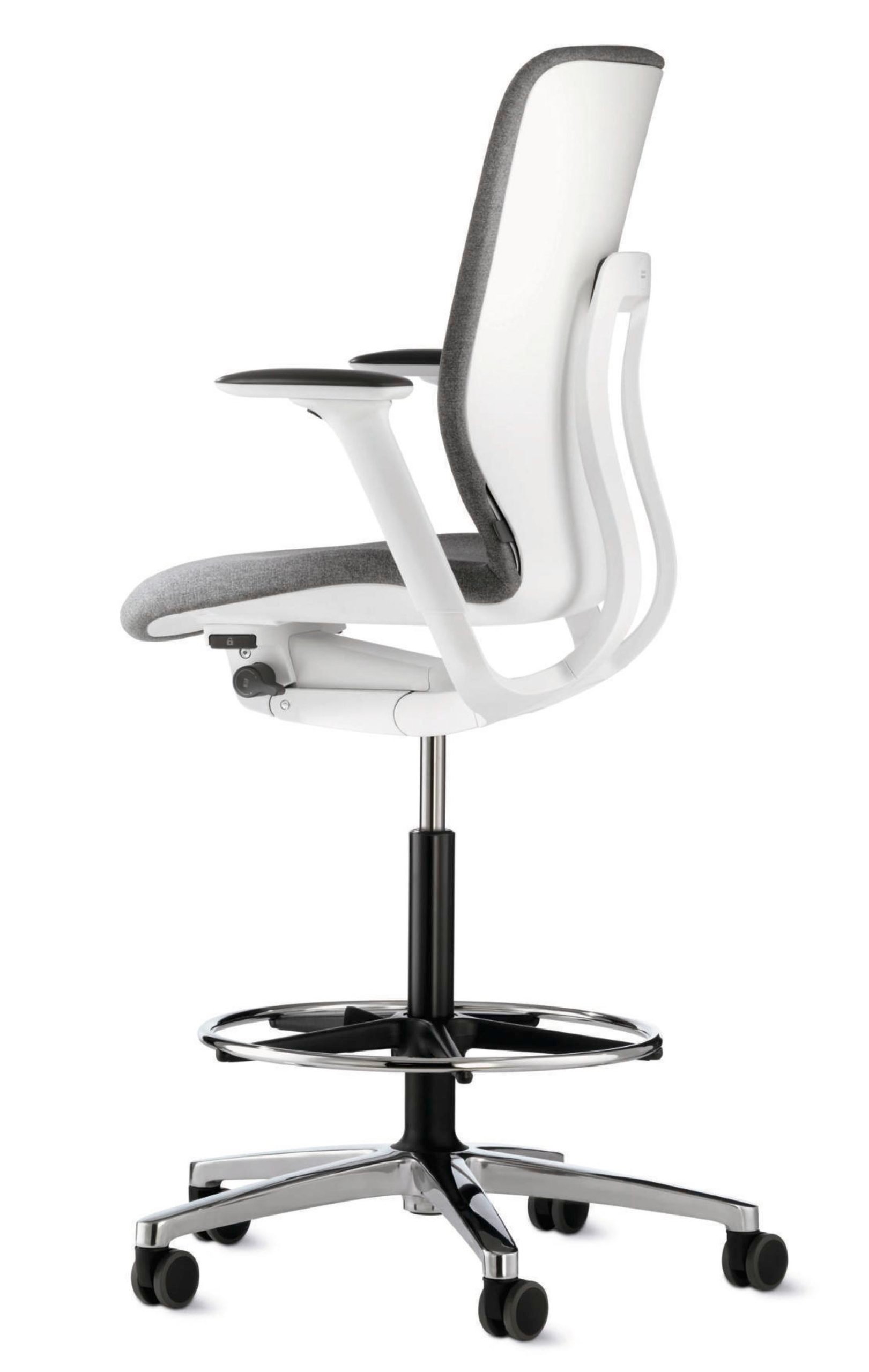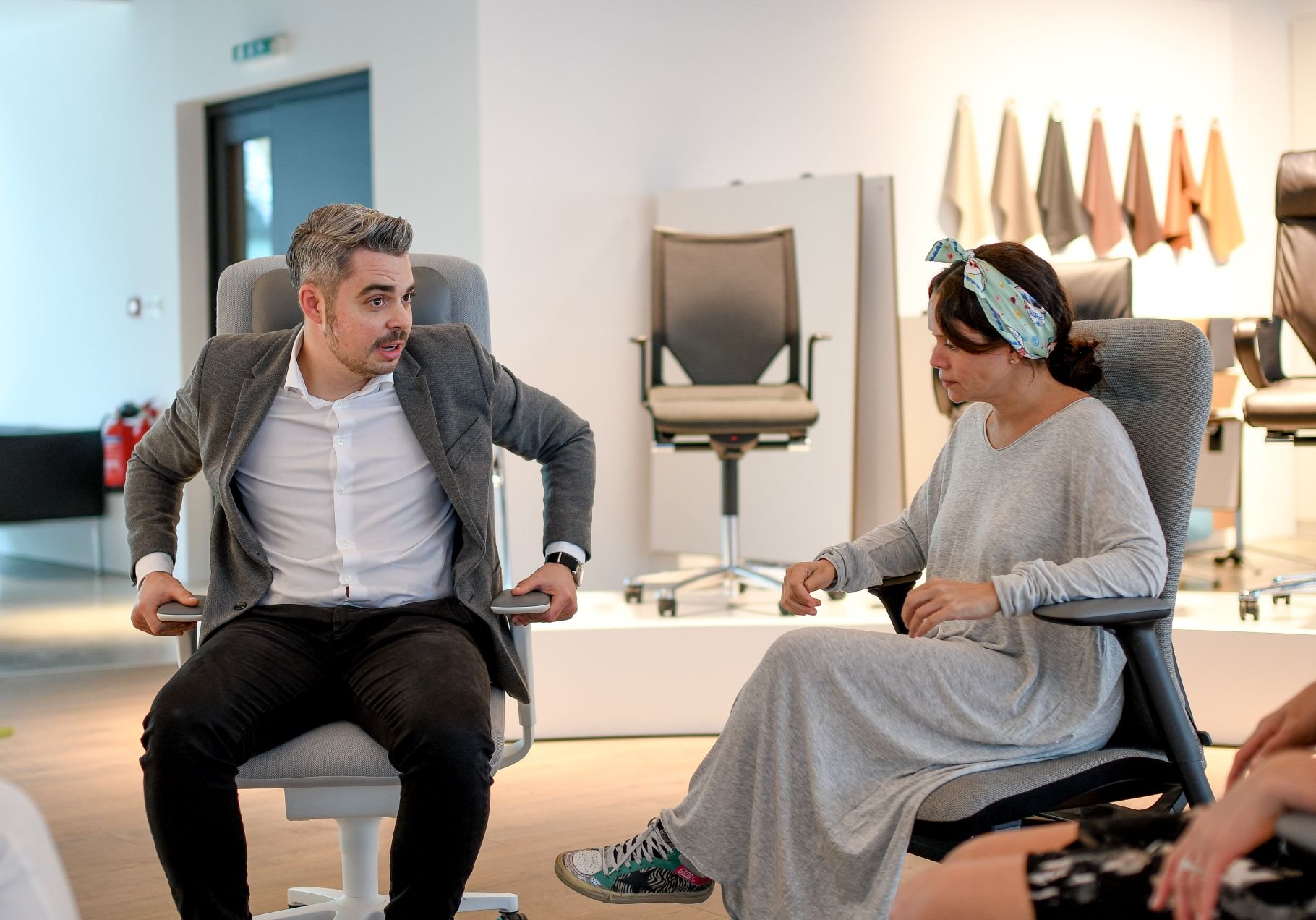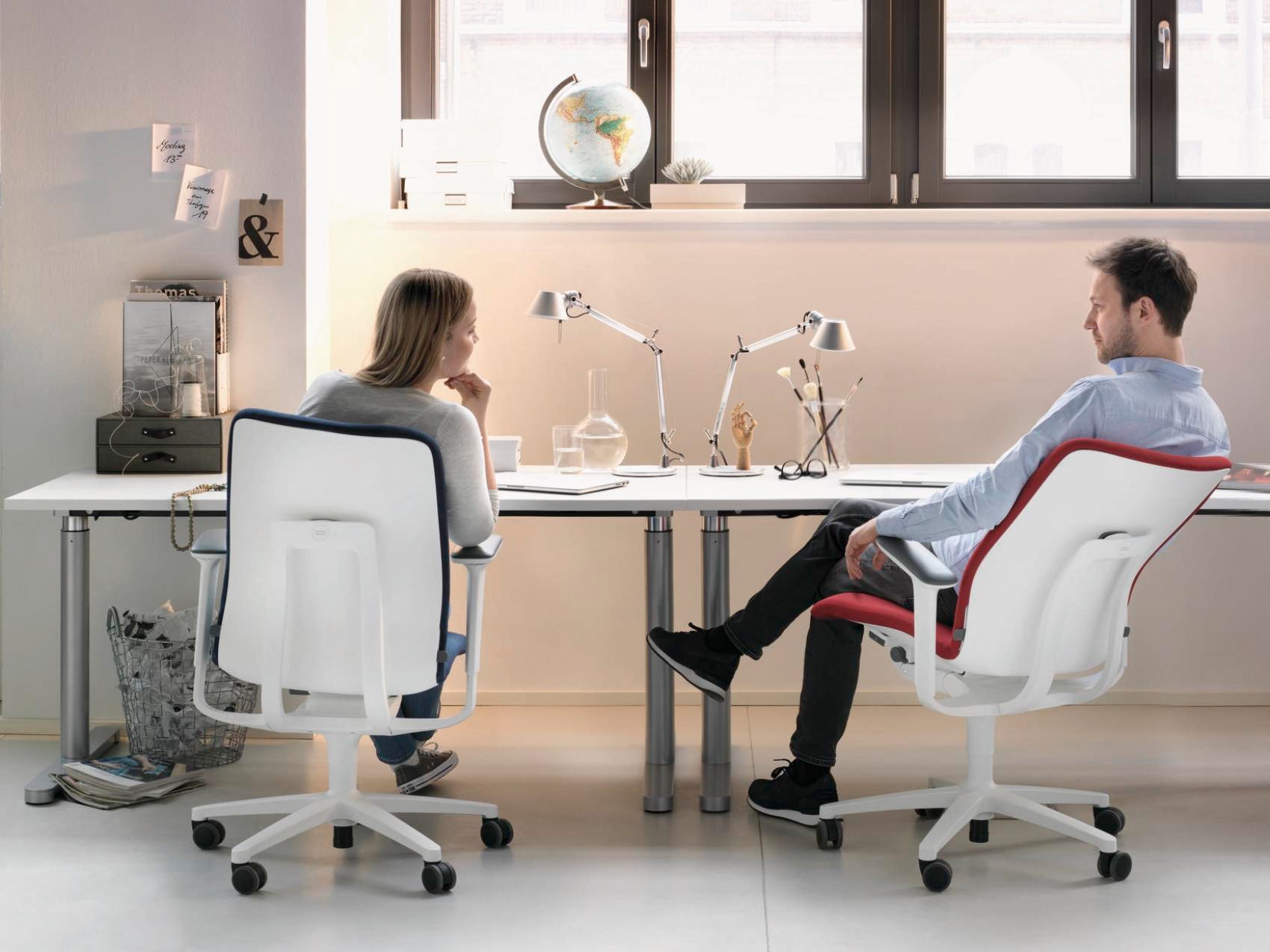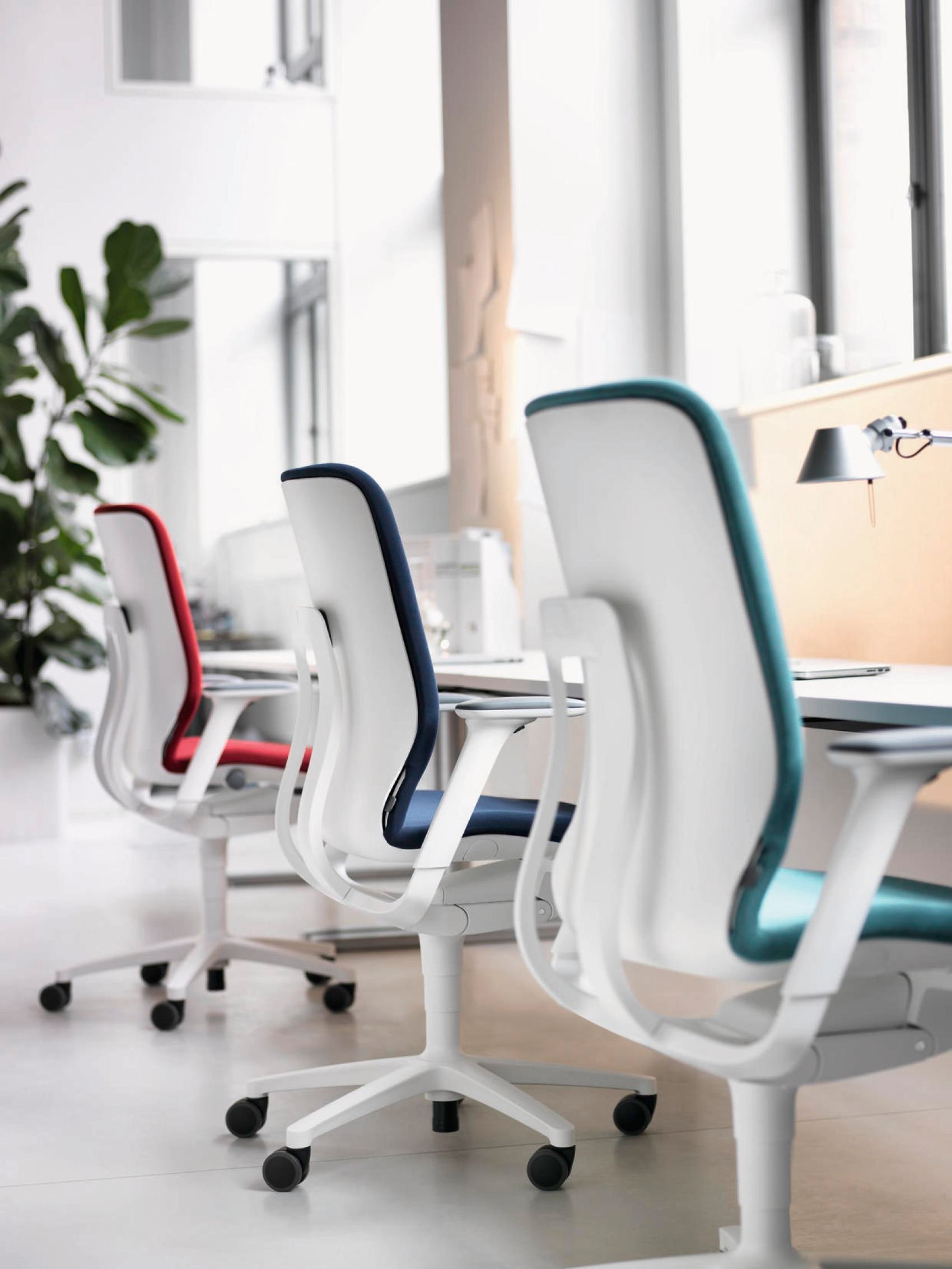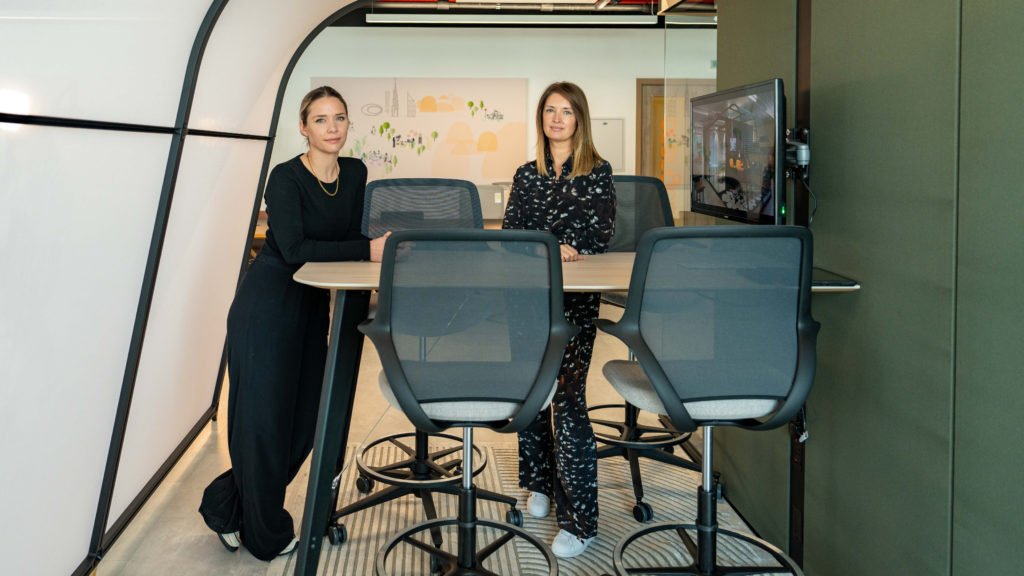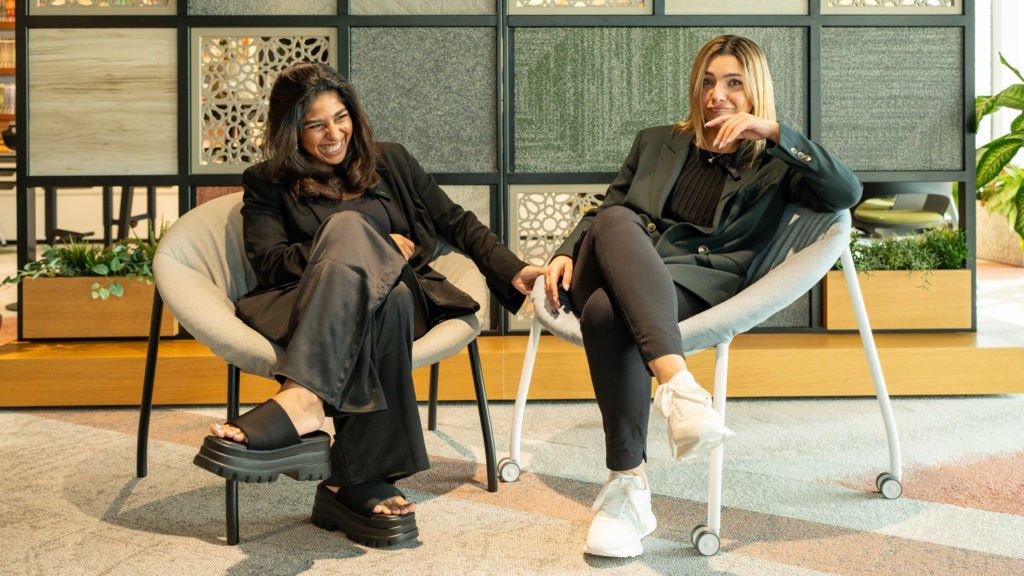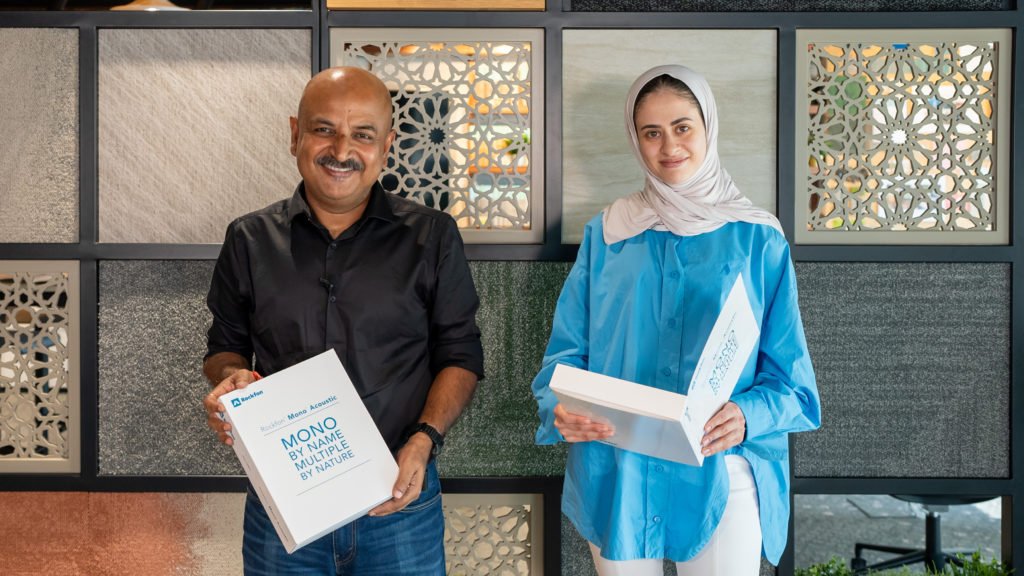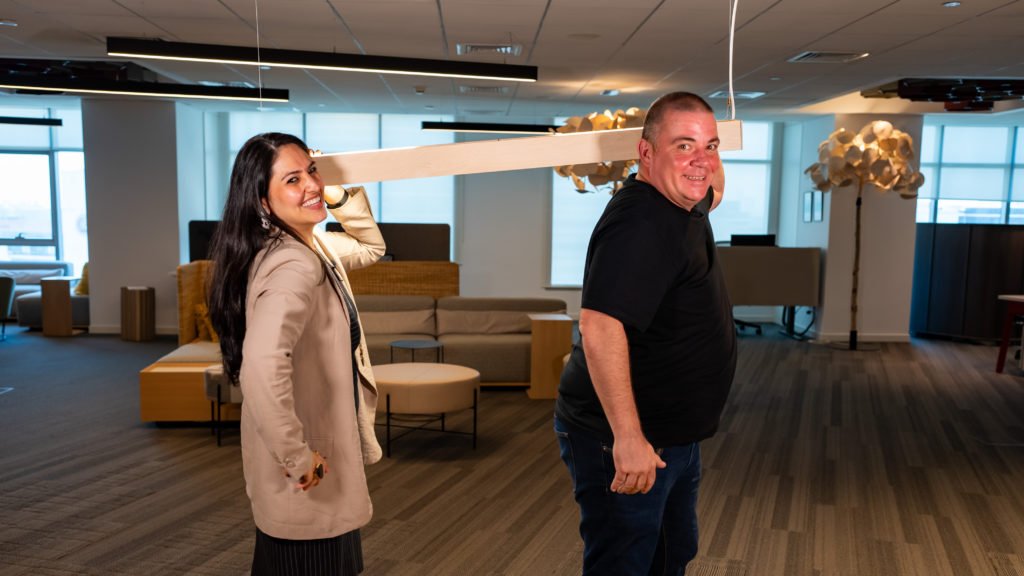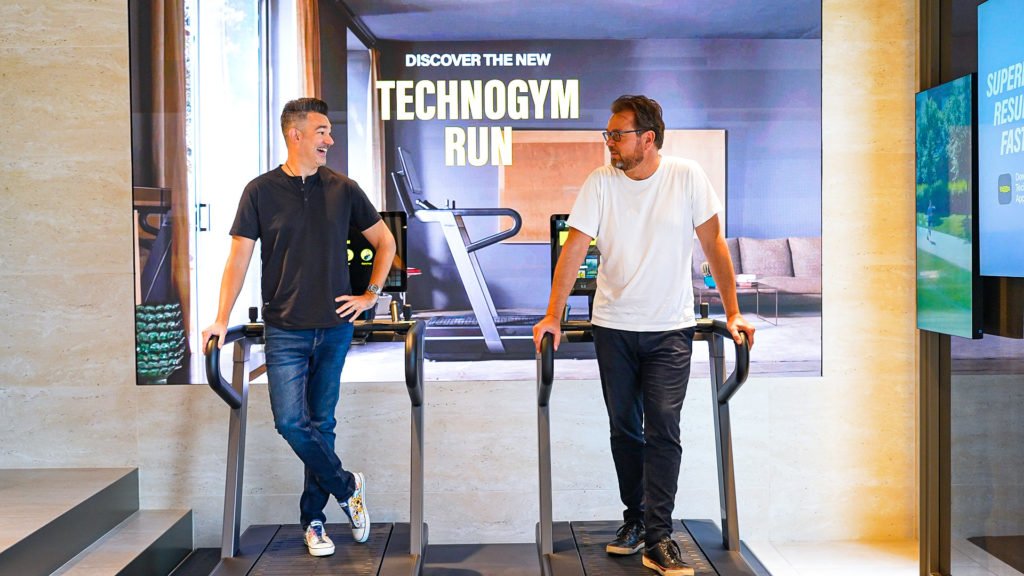Trimension®
The AT chair employs Wilkhahn’s patented Trimension® technology, which uses 3D kinematics – a world’s unique solution. Trimension® mimics the pelvis’ natural range of motion, matching the way the joints function, from flexing, extending, leaning sideways or rotating – quite interesting to see, and we had a grand time testing out this mechanism. When moving backwards and forwards, the backrest and seat shell follows synchronously so that the user is always sitting dynamically in the right position. But the unique bit is that the seat and back can also tilt sideways, “Basically mimicking the movement of a human walk,” says Pascal. “In addition the counter pressure adjusts automatically to any posture or movement, allowing the body to always maintain its centre of gravity.”
Pascal then goes on to explain how our bodies are built for being active and being outside. “And with industrialisation, this lifestyle moved rapidly indoors, to being at a desk. Being in a static position for extended periods of time is actually making us lose muscle mass. The Trimension technology, along with 3D kinematics, activates the body with natural movements from the knees to the hips and the entire upper body. Users’ metabolisms are activated, they feel less fatigue at the end of the day and are more productive.”
As we dig deeper into the backstory, we learn that the brand has been researching into this for decades, all in an effort to make people less deskbound. The 3D dynamics stimulate the body while providing comfort, thereby boosting our powers of concentration and simultaneously making work a relaxing experience.

